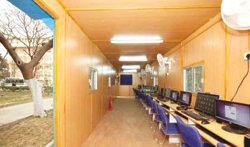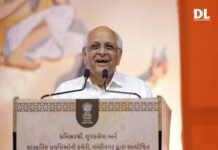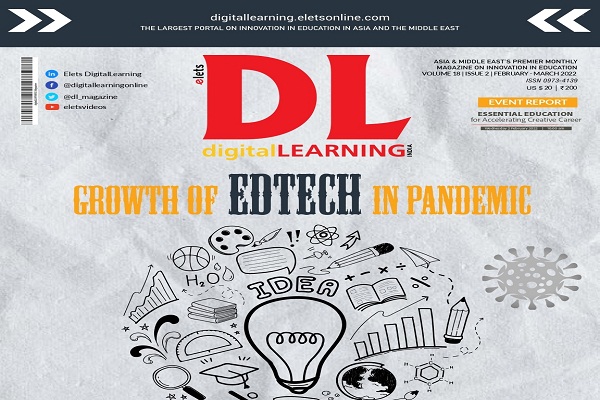 The Lab-in-Box was inaugurated by Shri Kapil Sibal, Hon’ble Minister HRD on February 2, 2011
The Lab-in-Box was inaugurated by Shri Kapil Sibal, Hon’ble Minister HRD on February 2, 2011
By Pragya Gupta, digital LEARNING Bureau
NCERT (National Council of Educational Research and Training) has initiated Lab-in-box project for creating ready to roll out computer labs in shipping containers to cut down the time to roll out ICT infrastructure in remote schools in India. As part of the national project on Universal Primary Education (Sarva Siksha Abhiyan) as well as under the ICT@school scheme, government has been rolling out computers to government aided and rural schools. However, the schools are normally not ready with a computer lab room and usually have classrooms that are not suitable to be used as a computer lab. By the time the school is able to get the funds for the civil works for the computer lab, the computers become outdated or get spoilt. Also, in the process, a few students finish their schools without being able to get access to the computers. Hence CIET and HP jointly explored the novel concept of setting up computer labs in a shipping container and sending out the entire lab at one go. This provides the schools with a quick, water-proof, ready to use ICT infrastructure that can be used from day one. Also, schools face many other problems such as lack of electricity and connectivity. The Lab-in-box concept has a diesel generator set for electricity and has VSAT connectivity for Internet through ISRO’s Edusat satellite. Moreover, remote schools find it difficult to get the latest textbooks. The Lab-in-box will come with a printer. It is a compact self sustained, readymade structure equipped with all the resources required by a school for an ICT enabled classroom without any infrastructural constraint.
The Lab-in-Box was inaugurated by Shri Kapil Sibal, Hon’ble Minister Human Resource Development (HRD) on February 2, 2011. Kapil Sibal, Honorable Minister of HRD and Communications and Information Technology, said, “What we have here is an excellent example of aligning technology innovation to meet the social and educational challenges we face in the country, using a very unique and modular approach that is sustainable and cost-effective. It’s a commendable venture by HP. This is a powerful collaboration between NCERT, a national council that has been focused on advancing the quality of school education in India for the last 50 years, and HP, a world leading technology innovator.”
Lab-in-Box Open New Vistas for Education
By Dheeraj Jandial, PRO, NCERT
Few innovations have the potential towards societal transformation although these May not touch the ordinary lives and chores of the common man. These innovations therefore miss the opportunity to be in the list of exemplary ones or the one which could be described as path-breaking. God forbids, I earnestly wish that the Lab-in-Box, a research laboratory housed in a shipping container, does not figure in the list of such innovations. Lab-in-Box May not appear to be something very extraordinary but the potential it contains for dissemination of knowledge is really enormous. Verily, it is in this context one cannot but just conform to the thought that it is an idea that can change the world you live in.
Lab-in-Box, as the terminology specifies is a research laboratory housed in a shipping container (Box). The idea was conjointly developed by National Council of Educational Research and Training (NCERT) and Hewlett Packard (HP). The meeting of minds of two giants i.e. CIET, NCERT and HP was bound to result in a productive outcome, but the productive outcome of this potential was never envisioned of.
Using a simple shipping container of the dimension 40 X 8 feet for housing 15 computers along with a multi-functional printer, an electrical generator set, wireless connectivity and built-in furniture to accommodate 15 students and one teacher is an idea, which May have never struck to our faculties, strangely. The Lab is fully equipped, self-powered, mobile computing centre that overcomes the constraints of power, space, infrastructure and equipment challenges currently faced by schools in India. To suit it to varying climatic conditions right from the chilly weather of Ladakh region in Jammu and Kashmir to the high temperatures of Rajasthan, and hot and moist Andaman and Nicobar Islands in Indian Ocean the iron walls of the shipping container are insulated, which helps in maintaining uniform temperature inside the container. Moreover, the flexibility of the laboratory is being extended, either by bridging two or more container together or in a more aesthetic manner placing one above another, of course with an iron staircase for access is just a matter of common sense application. CIET, NCERT on its part intends to use the Lab-in-Box to demonstrate the power of interactive learning via its online syllabi and online tutorials to students and teachers through Internet. Future features of the Lab could also include technology to electronically track school drop-outs and more effectively with a simple fingerprint reader that connects to a PC in the Lab and is able to send the attendance information to a government server.
Lab-in-Box has all the scope to extend beyond the education sector. The prototype module could be tried for the health sector especially, in the emerging arena of tele-medicine for boosting research in medicine as also in saving precious lives. As the shipping containers are spacious, robust and water-proof, they can be easily customized for variety of scenarios. The same infrastructure can be leveraged for social requirements, such as service centres and security needs.
The demonstration of Lab-in-Box reveals that it is a great opportunity and a viable alternative for the access and reach of such facilities which the rural India has dreamt of till to date. In fact, NCERT and HP were right in placing the placard atop the container as it being a tool for bridging the so called digital divide that is evidently witnessed in the polarities of rural and urban India. Another, positive outcome of the Lab-in-Box is blend of partnership among the NCERT, though autonomous with a private player Hewlett Packard (HP). However, this should not in any way create a misconception since the fruits yielded by dissemination of education would be relished by one and all. More so, education is not the only onerous responsibility of the government. It is an area in which each one of us has our own self-interest for the dividend knowledge yields, which amply gets reflected in the prosperity and progress education ensures to society at large.
Many of us could be critical of the potential that Lab-in-Box holds in fulfilling the agenda of inclusive education. But then one must always remember that the goal of education is to create men who are capable of doing new things, not simply of repeating what other generations have done. Education should strive to build men who are creative, inventive and imaginative and not the stuff that accepts gladly whatever is offered on a platter.





















